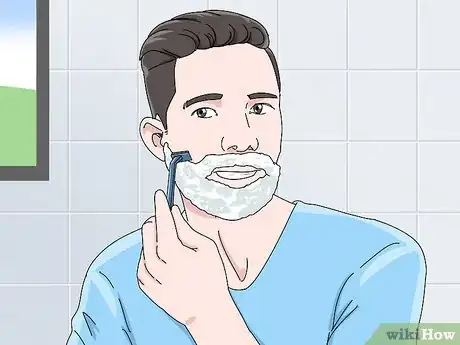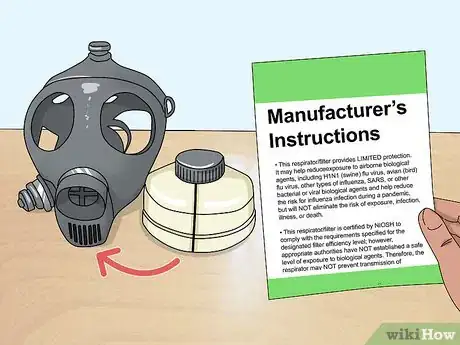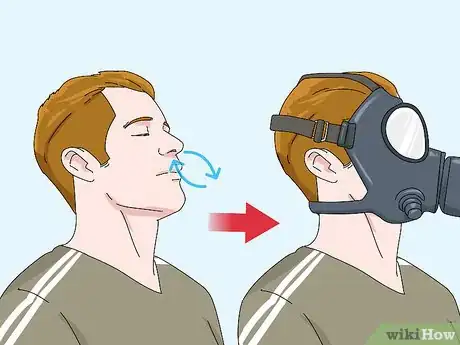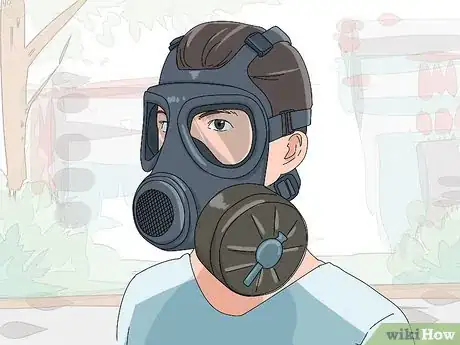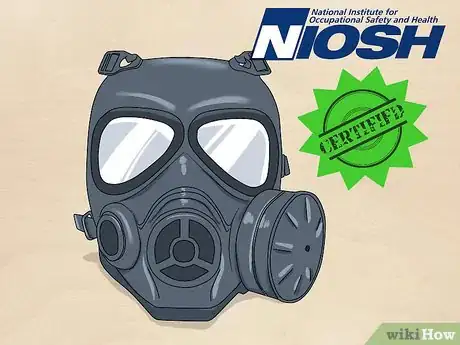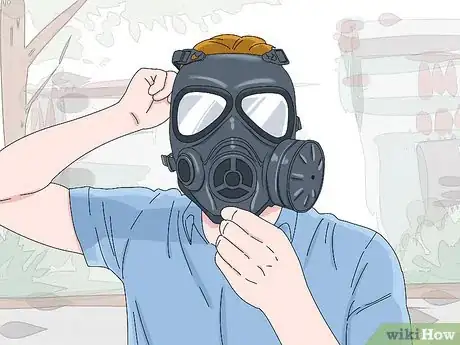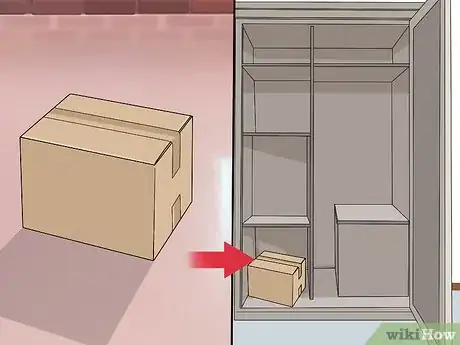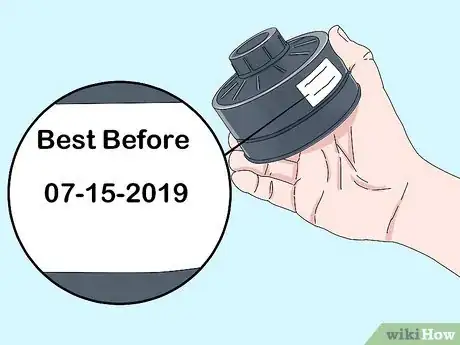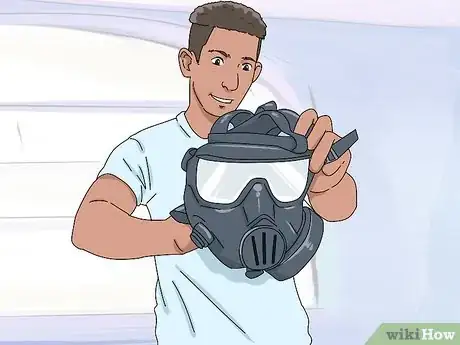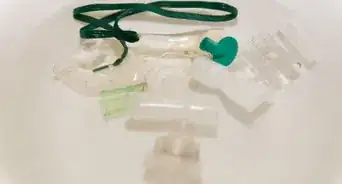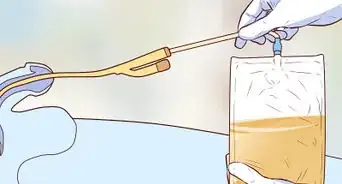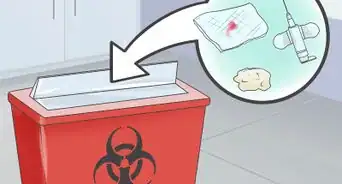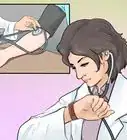This article was co-authored by wikiHow Staff. Our trained team of editors and researchers validate articles for accuracy and comprehensiveness. wikiHow's Content Management Team carefully monitors the work from our editorial staff to ensure that each article is backed by trusted research and meets our high quality standards.
This article has been viewed 72,416 times.
Learn more...
A gas mask, also known as an air purifying respirator, filters chemical gases and particles from the air. If used properly, a gas mask can help protect you from the effects of breathing air that has been contaminated with gas, vapor, or particles. Make sure you have the proper filters for your gas mask and that the mask is tightly adjusted to fit your face. You can keep your gas mask ready for disasters by storing it properly and making sure your filters are up to date.
Steps
Using a Gas Mask
-
1Shave or wax your facial hair. A gas mask needs to fight tightly on your face. Facial hair like a beard, sideburns, or a moustache can prevent the mask from sealing properly. Make sure you shave or wax any facial hair before testing or wearing a gas mask to ensure the gas mask seals correctly.[1]
-
2Remove jewelry and headwear. Jewelry like earrings and headwear like a hat or scarf can prevent the gas mask from sealing properly. Before putting on a gas mask, take off any jewelry or headwear that might get in the way of the seal.Advertisement
-
3Attach the filter according to the manufacturer’s instructions. There are many different types of gas masks. How and when to secure the mask’s filter differs by manufacturer. Call or email the manufacturer and ask them about the proper way to attach the filter and when you should do it.
-
4Use straps to secure the gas mask over your face. The face piece of a gas mask is secured to the wearer’s head with straps. Place the mask over your face. Adjust the straps until the gas mask is fitted firmly over your face.[2]
-
5Breathe as you normally would. A gas mask protects you from contaminants by filtering out chemicals and other dangerous agents. Once you have the gas mask on, breathe normally. The contaminants will be removed from the air as it passes through the filter.[3]
-
6Keep the mask on even if you can’t talk through it. You might not be able to talk while wearing the mask. Some gas masks will have speaking capabilities, allowing you to talk while wearing the device. Other gas masks prevent you from talking while you wear the mask. Check with the manufacturer if you have questions about your gas mask’s speaking capabilities.[4]
Buying and Testing a Gas Mask
-
1Choose the right type of gas mask. A gas mask can protect you from various contaminants in the atmosphere, depending on the type of contaminant. Some gas masks protect against biological substances, while other will protect you from chemical substances. Purchase a gas mask that has been approved by a reputable government agency to protect against specific hazards. For example, if you live in the United States, a gas mask certified by the National Institute of Safety and Health, or NIOSH, is a good choice.[5]
- A gas mask will not protect you from fire-related contaminants like smoke.
-
2Buy the appropriate filters. A gas mask is only effective if the proper filter is used. You will need a different filter for each type of threat you might face. There is no one-size-fits all filter. For example, if you face the threat of a chemical attack from chlorine gas, you will need a filter specifically manufactured to filter chlorine gas from the air. If you also face a threat from tear gas, you will need a filter created specifically for tear gas.[6]
-
3Test the gas mask. In order to make sure the gas mask is working properly, you will need to test it. If you received your gas mask from your employer or other organization, they should run a test with you to ensure the mask works. If you purchased your gas mask as an individual, contact the manufacturer about how to test your gas mask at home.
- Since every mask is different, you will need to make sure you consult your employer or the mask’s manufacturer to determine exactly how to test it.
Keeping Your Gas Mask Ready for Disasters
-
1Store the mask according to the manufacturer’s instructions. It is important that a gas mask is stored properly. Consult the manufacturer of your gas mask and ask how the mask should be stored. Try to store the mask in a sealed box. Place the sealed box in a cool, dry, dark place like a closet.
-
2Keep your filters up to date. Check the expiration dates on your filters regularly. If a filter has expired, dispose of it according to manufacturer’s instructions. You should also make sure you are up to date with the types of filters you might need, depending on the potential threats in your area.[7]
-
3Inspect the mask regularly. You should inspect your gas mask once a month to make sure the materials have not degraded. Check the seals on the gas mask and look for cracks or signs of wear. If you notice any cracks in the gas mask materials, you should have it inspected by a professional before depending on it during a disaster.
References
- ↑ https://www.cdc.gov/niosh/npptl/topics/respirators/factsheets/respfact.html
- ↑ https://www.cdc.gov/niosh/npptl/topics/respirators/factsheets/respfact.html
- ↑ https://www.cdc.gov/niosh/npptl/topics/respirators/factsheets/respfact.html
- ↑ https://www.cdc.gov/niosh/npptl/topics/respirators/factsheets/respfact.html
- ↑ https://www.cdc.gov/niosh/npptl/topics/respirators/factsheets/respfact.html
- ↑ https://www.cdc.gov/niosh/npptl/topics/respirators/factsheets/respfact.html
- ↑ https://www.cdc.gov/niosh/npptl/topics/respirators/factsheets/respfact.html
